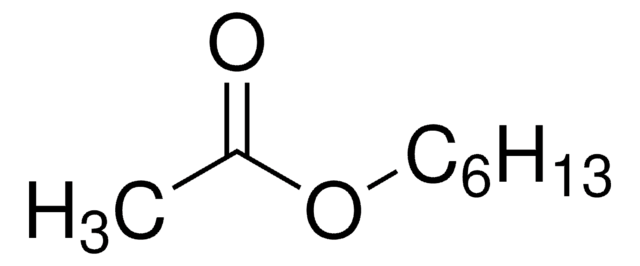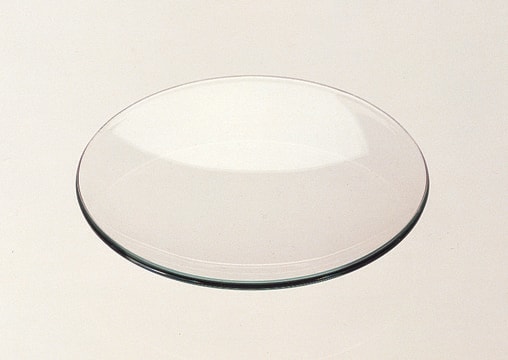306967
Isopentyl acetate
anhydrous, ≥99%
Synonym(s):
Acetic acid 3-methylbutyl ester, Isoamyl acetate
About This Item
Recommended Products
grade
anhydrous
Quality Level
vapor density
4.5 (vs air)
vapor pressure
5 mmHg ( 25 °C)
Assay
≥99%
form
liquid
autoignition temp.
680 °F
expl. lim.
7.5 %
impurities
<0.005% water
evapn. residue
<0.0005%
refractive index
n20/D 1.4 (lit.)
bp
142 °C/756 mmHg (lit.)
mp
−78 °C (lit.)
density
0.876 g/mL at 25 °C (lit.)
SMILES string
CC(C)CCOC(C)=O
InChI
1S/C7H14O2/c1-6(2)4-5-9-7(3)8/h6H,4-5H2,1-3H3
InChI key
MLFHJEHSLIIPHL-UHFFFAOYSA-N
Looking for similar products? Visit Product Comparison Guide
Application
Signal Word
Warning
Hazard Statements
Precautionary Statements
Hazard Classifications
Flam. Liq. 3
Supplementary Hazards
Storage Class Code
3 - Flammable liquids
WGK
WGK 1
Flash Point(F)
91.4 °F - closed cup
Flash Point(C)
33 °C - closed cup
Personal Protective Equipment
Choose from one of the most recent versions:
Already Own This Product?
Find documentation for the products that you have recently purchased in the Document Library.
Customers Also Viewed
Our team of scientists has experience in all areas of research including Life Science, Material Science, Chemical Synthesis, Chromatography, Analytical and many others.
Contact Technical Service











